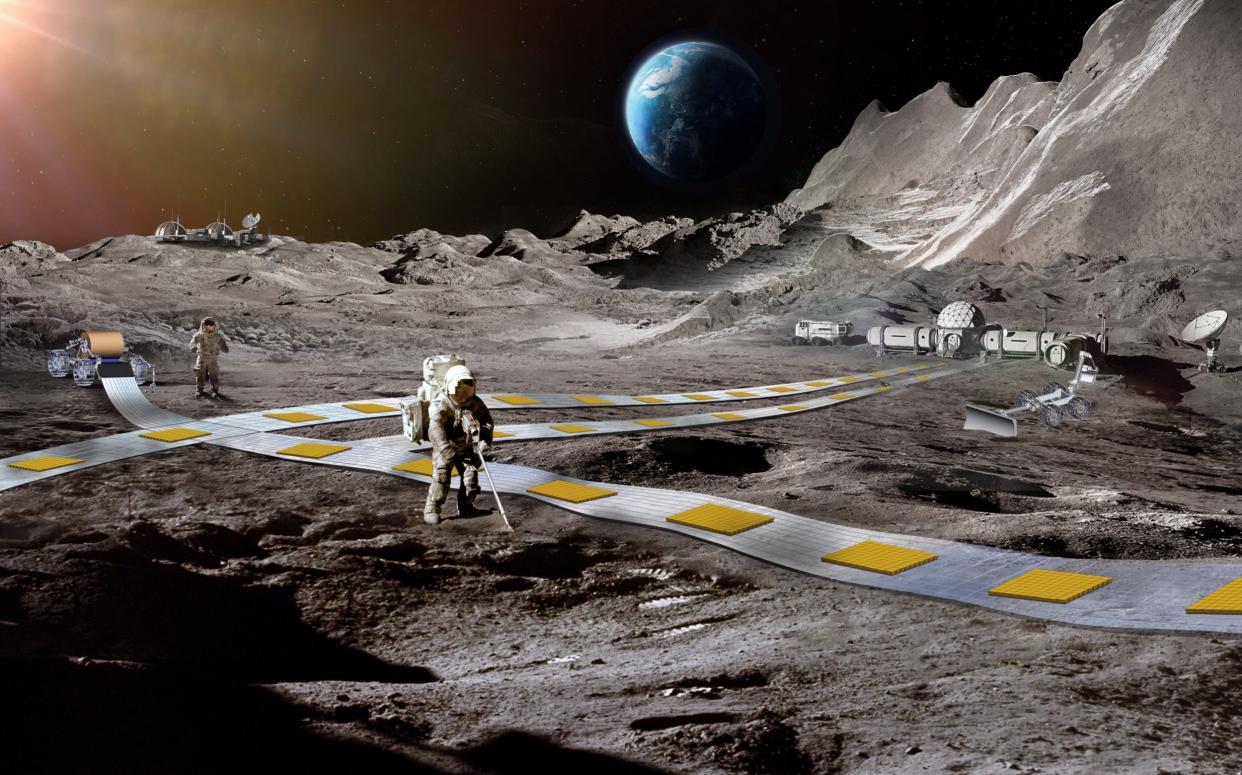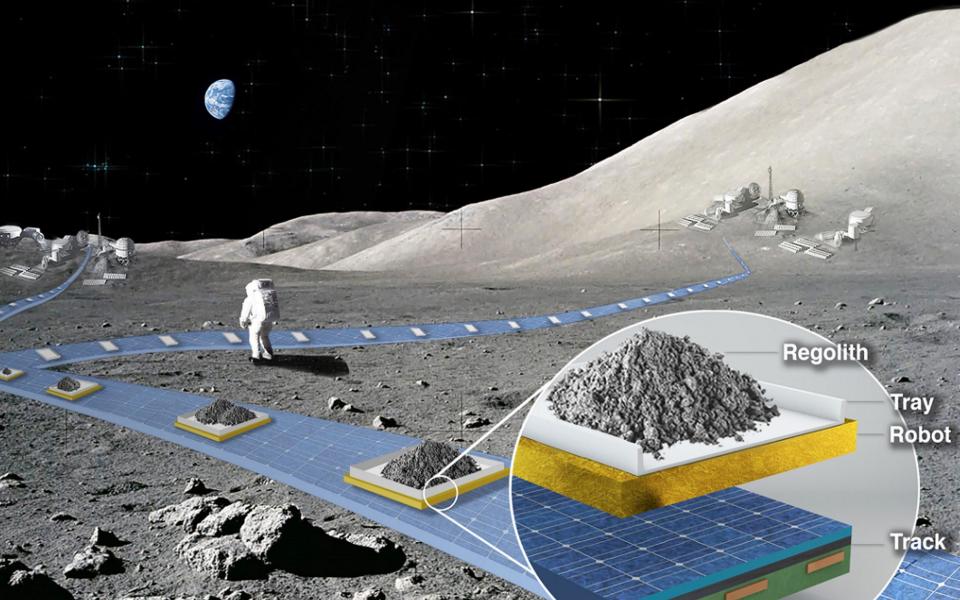Nasa increases funding for railway on the moon

Nasa has increased funding for a magnet-powered lunar railway that could move materials around the moon’s surface as part of a scheme exploring various sci-fi-style innovations.
Float (Flexible Levitation on a Track) is a project run by the Jet Propulsion Laboratory and has been advanced to phase two of Nasa’s Innovative Advanced Concepts programme (NIAC) studies.
Other concepts earmarked for development include a pulsed plasma rocket to reduce travel times between Earth and any destination in the solar system and a large optical observatory in space.
The lunar railway system, which could be operational within the next decade, would provide “reliable, autonomous and efficient payload transport on the Moon”. It could play a role in moving tons of regolith around the surface, which could be mined for various resources to be used by astronauts or at a lunar base.

The Float plan would see unpowered magnetic robots levitating over a 3-layer flexible film track to propel carts at around 1mph.
Ethan Schaler, a Nasa robotics engineer, is leading the project and estimates it could move 100 tons a day.
“Float will operate autonomously in the dusty, inhospitable lunar environment with minimal site preparation and its network of tracks can be rolled up/reconfigured over time to match evolving lunar base mission requirements,” said Mr Schaler.
Float robots will have no moving parts and levitate over the track to minimise lunar dust abrasion, unlike lunar robots with wheels, legs, or tracks.
This rail system could support daily operations of a sustainable lunar base as soon as the 2030s, according to Nasa’s Jet Propulsion Laboratory in Southern California.
John Nelson, NIAC programme executive at Nasa headquarters in Washington, said: “These diverse, science fiction-like concepts represent a fantastic class of phase two of studies.
“Our NIAC fellows never cease to amaze and inspire and this class definitely gives Nasa a lot to think about in terms of what’s possible in the future.”

 Yahoo News
Yahoo News 
